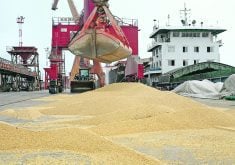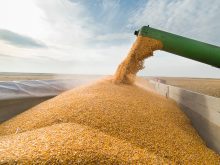American federal legislators last week agreed, under some duress, to create a $5.5 billion US emergency aid package for farmers.
The duress was in the United States Senate, where the Democratic majority wanted to give farmers more – $7.5 billion in emergency aid.
But American president George Bush threatened to veto the bill, calling it excessive when livestock returns are good and grain prices have risen from their late spring lows.
Senate Democrats gave in when it looked like Republican delays would push final passage until September, when money now set aside for farm aid would no longer be guaranteed.
Read Also

Flax sector sees omega-3 opportunity
SASKATOON — A global shortage of omega-3 oils could be an opportunity for the flax sector, says an industry official….
So the Senate accepted the $5.5 billion package put together by the Republican dominated House of Representatives.
It provides $4.6 billion to grain and cotton farmers to supplement the fixed annual payments they get from the government.
Another $423 million will go to growers of soybeans, canola and other oilseeds and smaller amounts to growers of other commodities.
Payments would be about 85 percent of the amount growers received last year.
This program will bring the amount in emergency farm aid to more than $30 billion over the last few years.
As I reported last week, rather than saying these bailouts can’t continue, as politicians in Canada do, the Americans have decided to redraft their basic farm support programs to include what they call a counter cyclical program.
It would increase payments when prices fall, eliminating the need for annual bailouts.
Markets cool
Turning to the markets, grain and oilseed prices dropped late last week as temperatures cooled and some rain fell in the U.S. Midwest.
There were some forecasts that heat could return to the area this week, but most corn has moved beyond the pollination stage and so is less at risk.
Private analysts have already shaved a little off earlier crop estimates.
The influential Sparks Co. now estimates the U.S. 2001-02 soybean crop at 2.917 billion bushels and corn production at 9.345 billion.
That compares with July USDA estimates of 2.935 billion for soybeans and 9.495 billion for corn.
We will see the latest USDA numbers on Aug. 10 when it releases the first field survey of the season for soybeans and corn.














